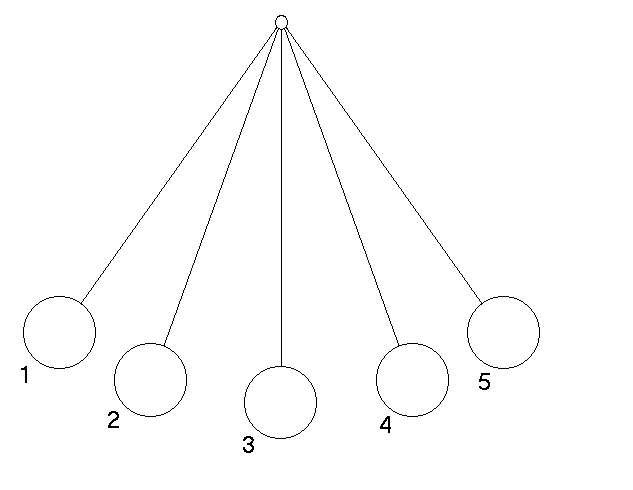for use with materialworlds pendulum simulation - freely editable by registered users
© materialworlds.com 2001
This is an experiment to find out how the pendulum's kinetic and potential energy change as it swings
The pendulum bob possesses two kinds of energy, kinetic energy (KE) and potential energy (PE).
Kinetic energy is the energy of motion. The faster the pendulum bob moves, the greater its kinetic energy.
Potential energy is stored energy - in this case gravitational potential energy - that could, for example, turn into kinetic energy if the pendulum is dropped. The higher the pendulum bob, the greater its potential energy.
The bar graph and scrolling energy graphs in the simulation let you follow how KE and PE change as the pendulum swings.
Adjust the friction control to zero, then
1. At which points or points (1...5) in the pendulum's swing is its KE greatest?
Why?
2. At which points or points (1...5) in the pendulum's swing is its PE greatest?
Why?

3. While friction is zero, how does the pendulum's total energy (KE + PE) change?
Why?
4. Now introduce some air friction. How does the pendulum's total energy change now?
5. Is this a smooth continuous change - or does it occur more at some times than others (and if it does, why)?
6. What do you think happens to this energy?